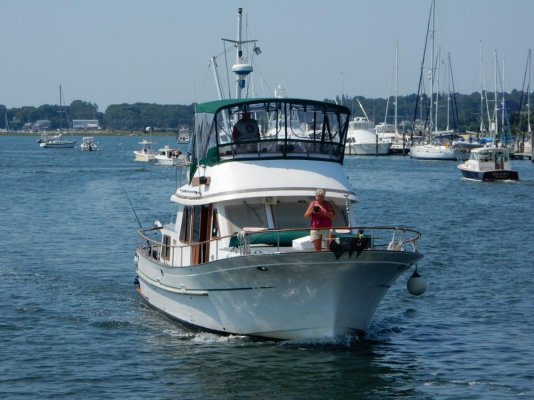"You'll likely have seen the results of the Chesapeake mud tests; what they found (relative to Fortress anchors and our mud) is what we've found. Can't speak to most of the other anchors in those tests. And of course you may not have mud."
The Chesapeake tests were run out of the Maryland Marine Biological Laboratory in Solomons MD. Their high tech research ship Rachael Carson was used for the tests. In the anchor test write up, much was made of the capabilities and precision of of the ship. The anchor tests were odd and did not reflect real world anchoring. The testing protocol was designed by and was paid for by Fortress. And guess what anchor won! Amazingly it was the Fortress. The following year I was at the MD MBL to write a story for Chesapeake Bay magazine about one of the graduate student research projects there. By that time, the staff at the MD MBL was already saying, "Well I'm sure you have read by now the results of our thoroughly discredited tests". They recognized that the test protocol was unusual.
Tadhana,
Thank you for your input as well. For the sake of accuracy, we chartered the Rachel Carson at a cost of $275 per hour + fuel from the University of Maryland Center for Environmental Science in Solomons, MD. The captain aboard was Michael Hume, the Director of Marine Operations and the Engineer-Mate was Rob Nilsen. You are certainly welcome to contact either of these men for their firsthand knowledge of the testing.
This holding power test was also attended by technical editors and well-experienced boating writers who represented magazines with over 1 million readers and none of them wrote in their follow-up articles anything about the test being "discredited."
Prior to this test, we had been exhibiting at the US Sailboat show for 15 years or so, and I had heard ongoing complaints from Chesapeake Bay boaters about the difficulties getting their anchors to set and hold in the soft mud bottoms, particularly during thunderstorms which oftentimes had significant wind gusts.
We certainly knew going in that our product design, with the capability of adjusting the shank / fluke angle to a wider opening (from 32° to 45°), would result in superior holding in this type of sea bottom.
While we hold a patent on this feature, it is certainly no great secret among large anchor manufacturers such as Bruce, the US Navy, and Vryhoff, as they all make anchors with a wider shank / fluke angle to improve performance in soft mud.
During the initial set up for the testing, we found that the boat was too big, the bottom too soft, and and anchors too small to achieve controlled, repeatable results. Under the guidance of Robert Taylor, a retired US Navy anchor design and soil mechanics expert with close to 50 years of experience, we decided to use the state of the art Dynamic Positioning System aboard the Rachel Carson for the testing.
This way every anchor would be pulled with the exact same starting scope and for the exact same distance, time and speed which was measured into the thousand decimals by a running line tensiometer at a cost of $5,000 per week. The results were monitored in real time on monitors that were set up aboard the vessel.
While many aboard were surprised at the test results, particularly for the highly-touted "new generation" anchors, Bob Taylor certainly was not, as he stated afterwards that "anchors which are designed and optimized for harder soils will typically only have a holding ratio (holding power divided by weight) of 10-15x when used in softer soils."
That is almost exactly what we found in the Chesapeake Bay, as the average peak holding power for many of the 44-46 lb anchors was typically only 450-700 lbs.
Additionally, during several of the pull tests some of the fixed fluke anchors basically skidded through the soft mud without much of a spike in tension. Afterwards it was suggested that if a roll bar anchor (such as a Rocna) landed on its side or upside down, then it would just sink into the soft mud and not be able to orient or turn into the fluke downward position.
Simply stated, a roll bar anchor needs a harder soil in order to roll. This also signified the advantage of the Danforth design with pivoting, movable flukes, as there is no upside down position.
As a side note, here is an interesting "pound for pound, kilogram for kilogram" weight comparison. Oftentimes people will buy a Fortress for the weight savings, but if weight is not an issue, then the performance is not comparable in common bottoms such as sand, mud, or clay.








